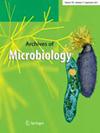Researchers have reported that Bacillus megaterium BM18-2 reduces Cd toxicity in Hybrid Pennisetum, but understanding the interaction between plants and associated endophytes is crucial for understanding phytoremediation strategies under heavy metal stress. The current study aims to monitor the colonization patterns of GFP-labeled endophytic bacteria BM18-2 on Hybrid Pennisetum grass. Additionally, it will monitor Cd’s effect on plant bacterial colonization. Confocal laser scanning microscopy of plant roots infected with gfp tagged BM18-2 revealed that the bacterium colonised root hairs and epidermal cells at the early stage of colonization, and over time, the bacteria penetrated to the internal tissues following their colonization of the stem and leaf. The roots, stems, and leaves of H. Pennisetum grown in Cd-contaminated soil contained a higher number of bacteria than those grown in normal soil. The result of Cd translocation indicated the condensation of heavy metals in the root cells and stem, while no Cd was found in the leaf. The study will also look for the enzymatic activity of bacteria BM18-2 and use Leadmium Green AM dye to track how Cd is taken up and moved through the plant. The enzymatic activity results showed that BM18-2 can produce catalase and amylase, but did not record any cellulase or lipase activity. As a result, the pattern of useful endophytic BM18-2 colonization through H. Pennisetum grass will aid in the application and maintenance of these bacteria in farming, and it presents new opportunities for the development of innovative strategies in the fields of agriculture and biotechnology.


